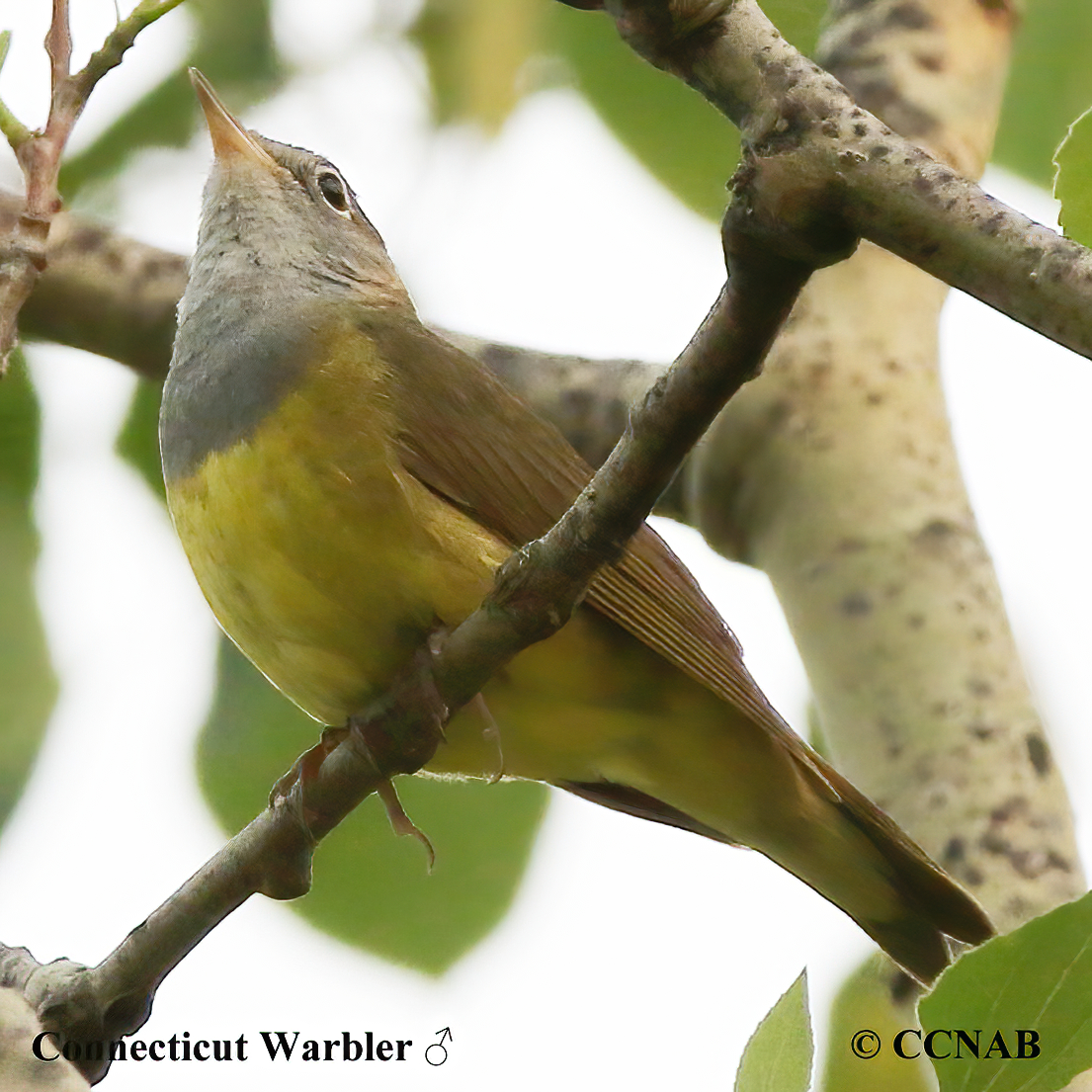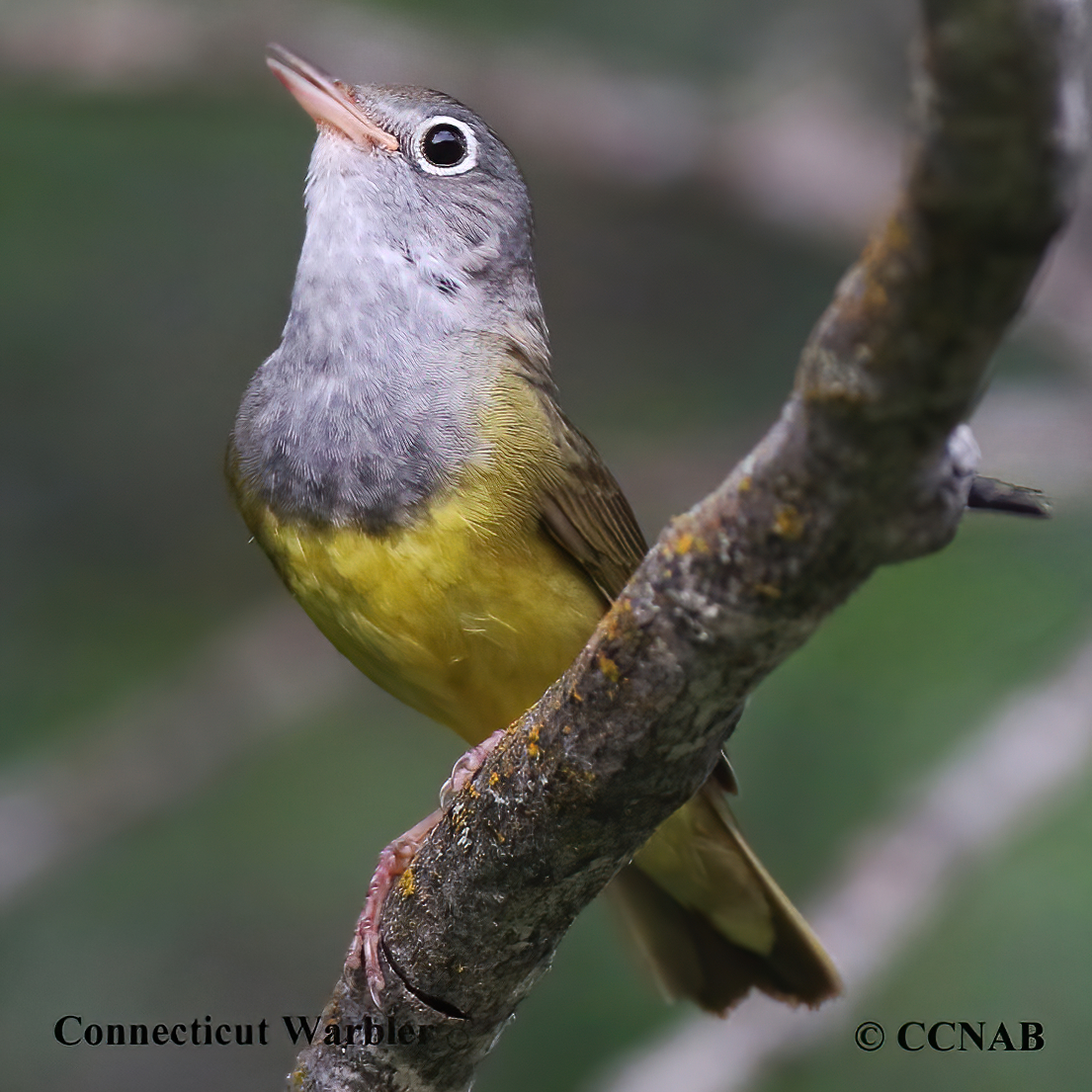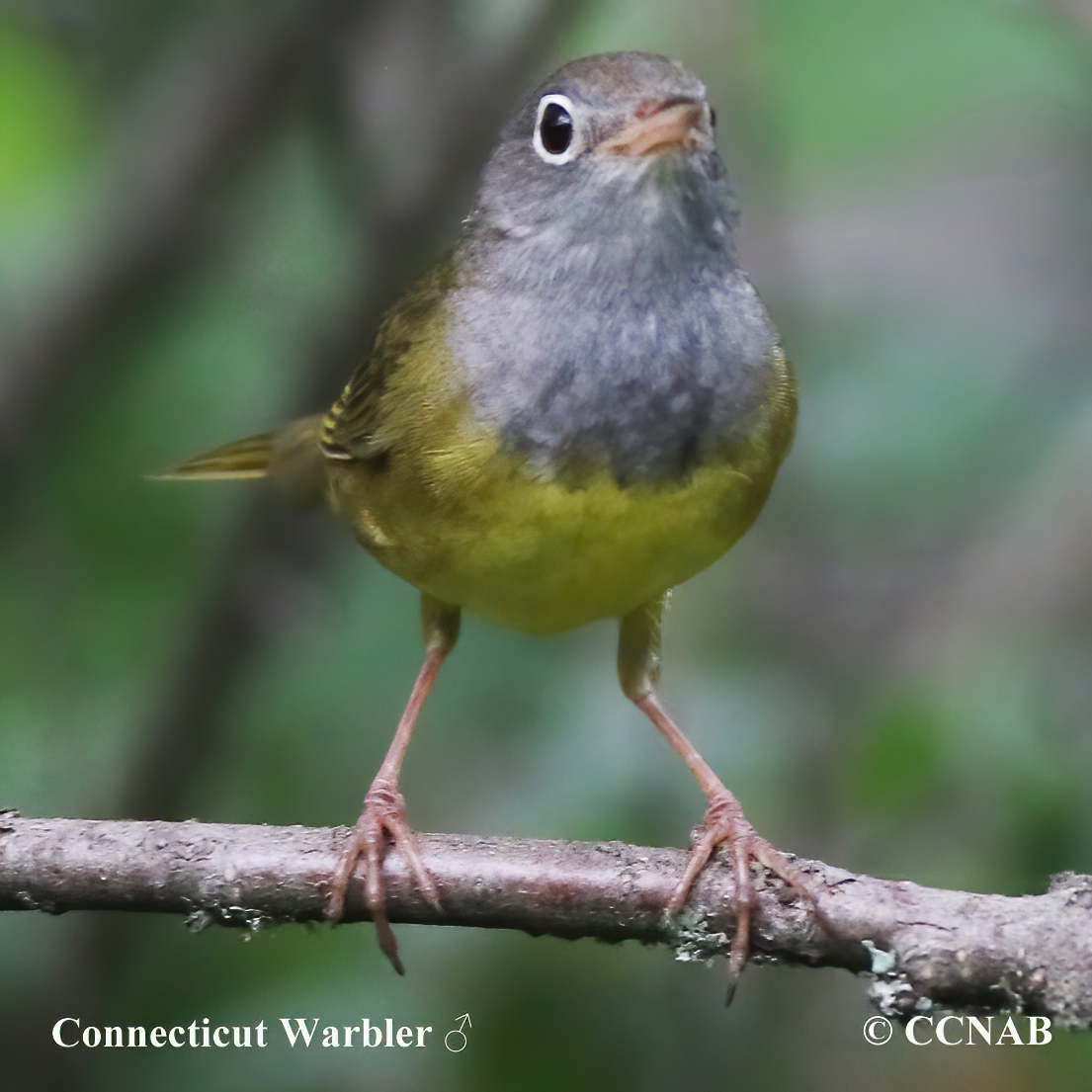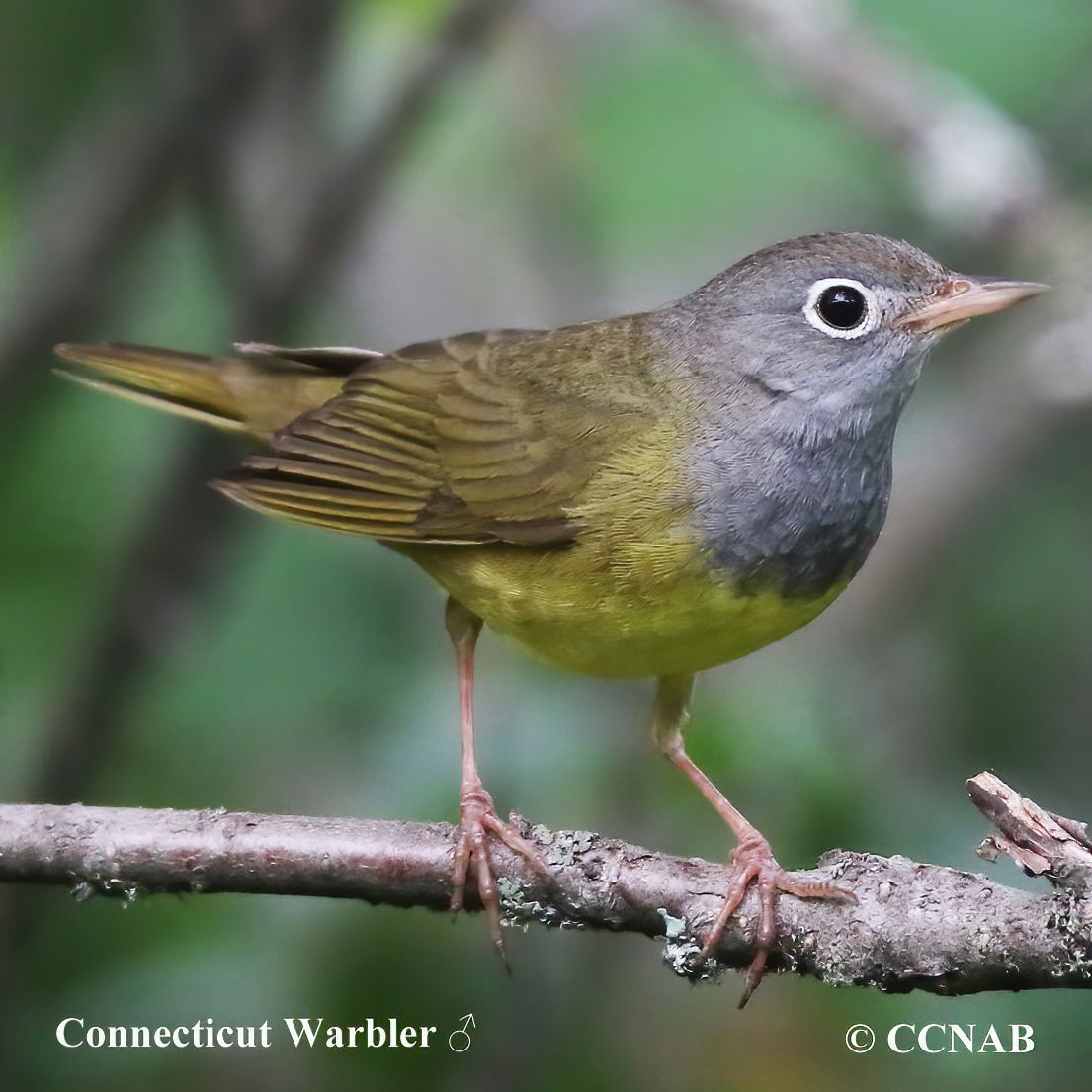North American Bird Search Box
This search box can be used to find bird species using bird's english, french or latin name, or to identify bird by its 4 letter Alpha Code
Field Guide for all the Birds of North America
Connecticut Warbler
4 Letter (english names) Alpha Code: CONW (2)
Paruline à gorge grise
Oporornis agilis
Information, images and range maps on over 1,000 birds of North America, including sub-species, vagrants, introduced birds and possibilities
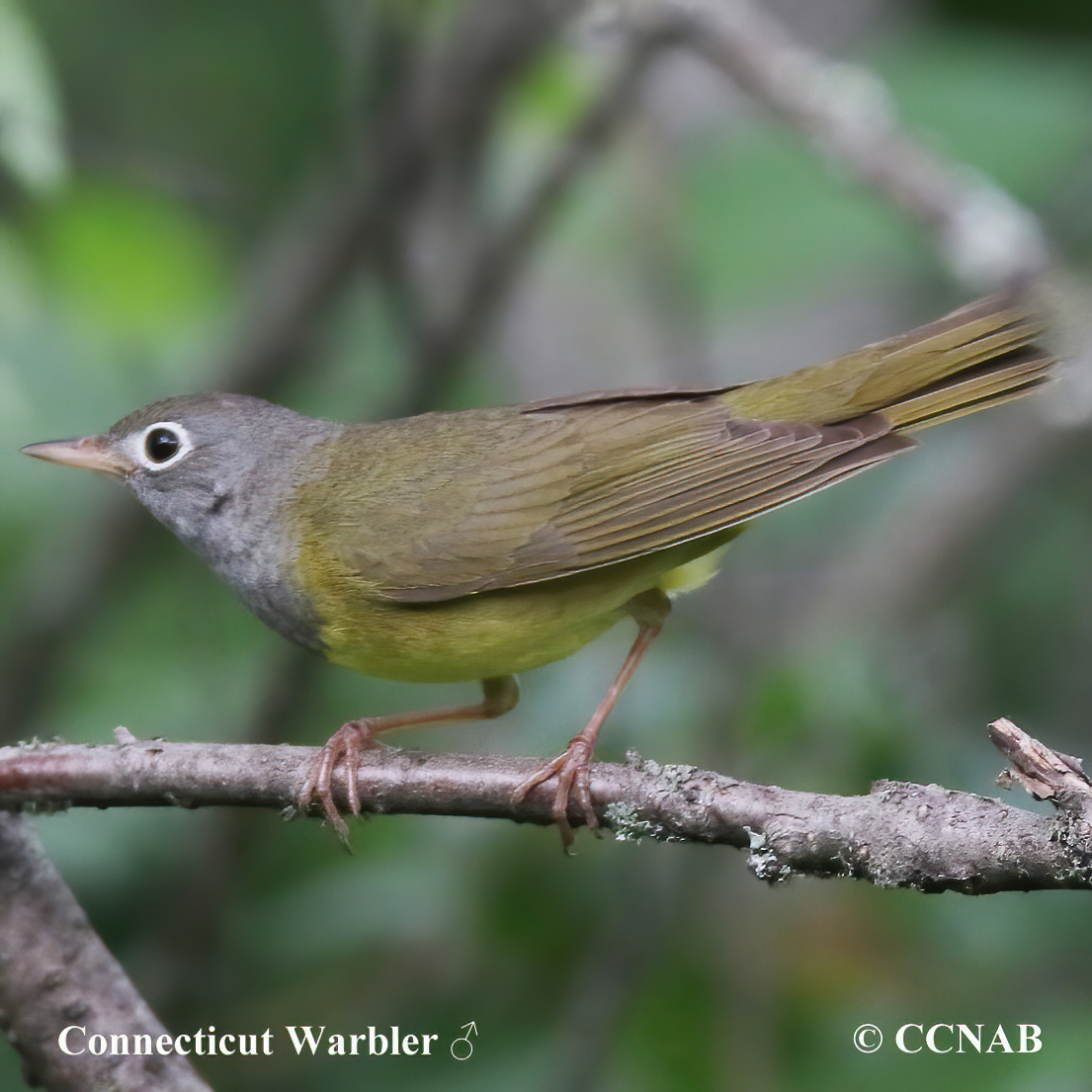
Species: The Connecticut Warbler (Oporornis agilis) is probably the most difficult warbler to see in North America. It is a bird sought after by all keen birders. It is an inhabitant of northern spruce bog swamps in the east and poplar stands in the west. It is very hard to observe because it feeds on the ground or close to it, as it prefers heavy ground growth. A few similar warblers are the Mourning Warbler (no eyerings) and the MacGillivray's Warbler (partial eyering above and below the eye), forming two distinct crescents.
Distinctions: The male has a bluish-gray face and throat. A very distinguished white eyering seen on the male, female and juveniles. Lemon-coloured breast and undertail coverts. Brownish-green back, wings, and tail, olive green showing on back of crown. Pink legs and partially pink bill. The female has similar colours but duller. The juvenile is mostly brown on the upper half, with lemon-coloured breast and undertail.
Voice: Chipping call, chippy-chipper-chippy-chipper song, repeated over.
Nesting: Three to five creamy white-coloured eggs marked with brown spots. Builds its nest on the ground or in shrubs close to the forest floor. The nest is composed of leaves, twigs and is formed in moss.
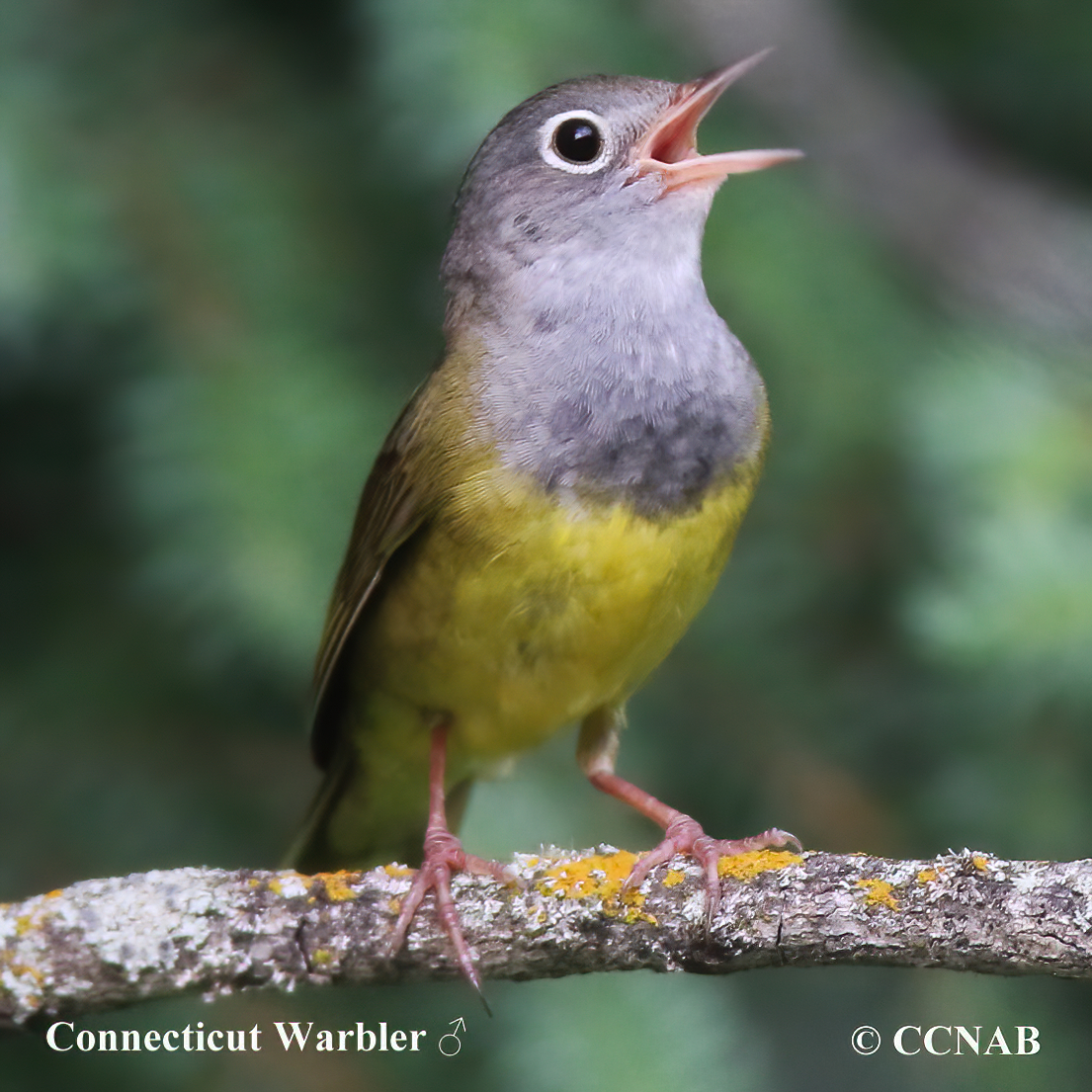
Seen in Manitoba, thanks to Christian Artuso
Life, Habitat and Pictures of North American Warblers
| B L | W W | W | Family | Latin Name |
|---|---|---|---|---|
| 5.75" 14.6cm | 9" 22.9cm | 0.5 oz 14.2g | Parulidae | Oporornis agilis |
- Summer
- Year Around
- Winter
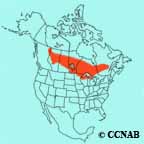
Distribution: Found from the central regions of Quebec and as far north as James Bay, west through the central portions of the prairies into northern British Columbia, just south of the western Great Lakes. It migrates in the fall through the Atlantic coastal states and spends its winters in central parts of South America.
Reference to Other Bird Site:
ABA - American Birding Association This site represents an organization that maintains official records of all birds species that have been proven to have been seen inside the perimeters of the North American Continent and the surrounding bodies of water. Regular revised versions are posted to keep the bird list current at all times. This is the list used by all serious birders over their lifetime. You may be aware of the movie called the "Big Year". It was with this list that all the competing birders used in an attempt to set a new record as to how many bird species that could be seen by an individual birder in one calendar year.
